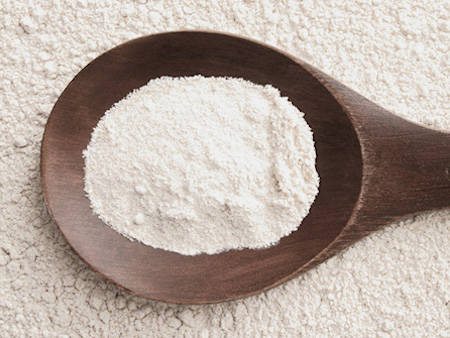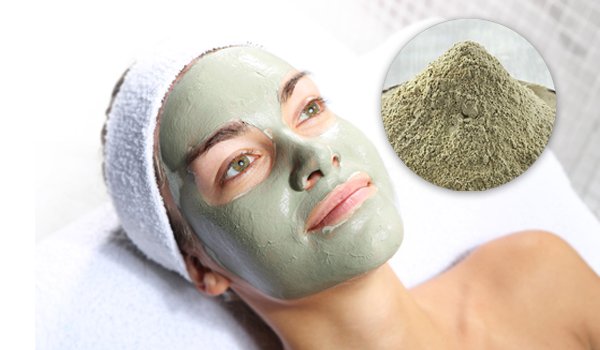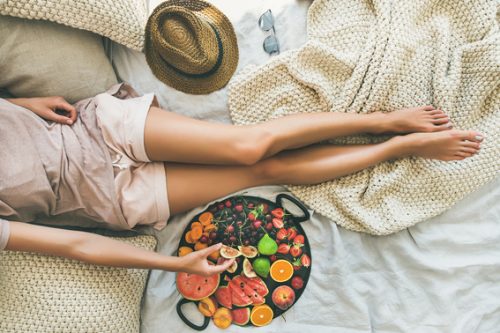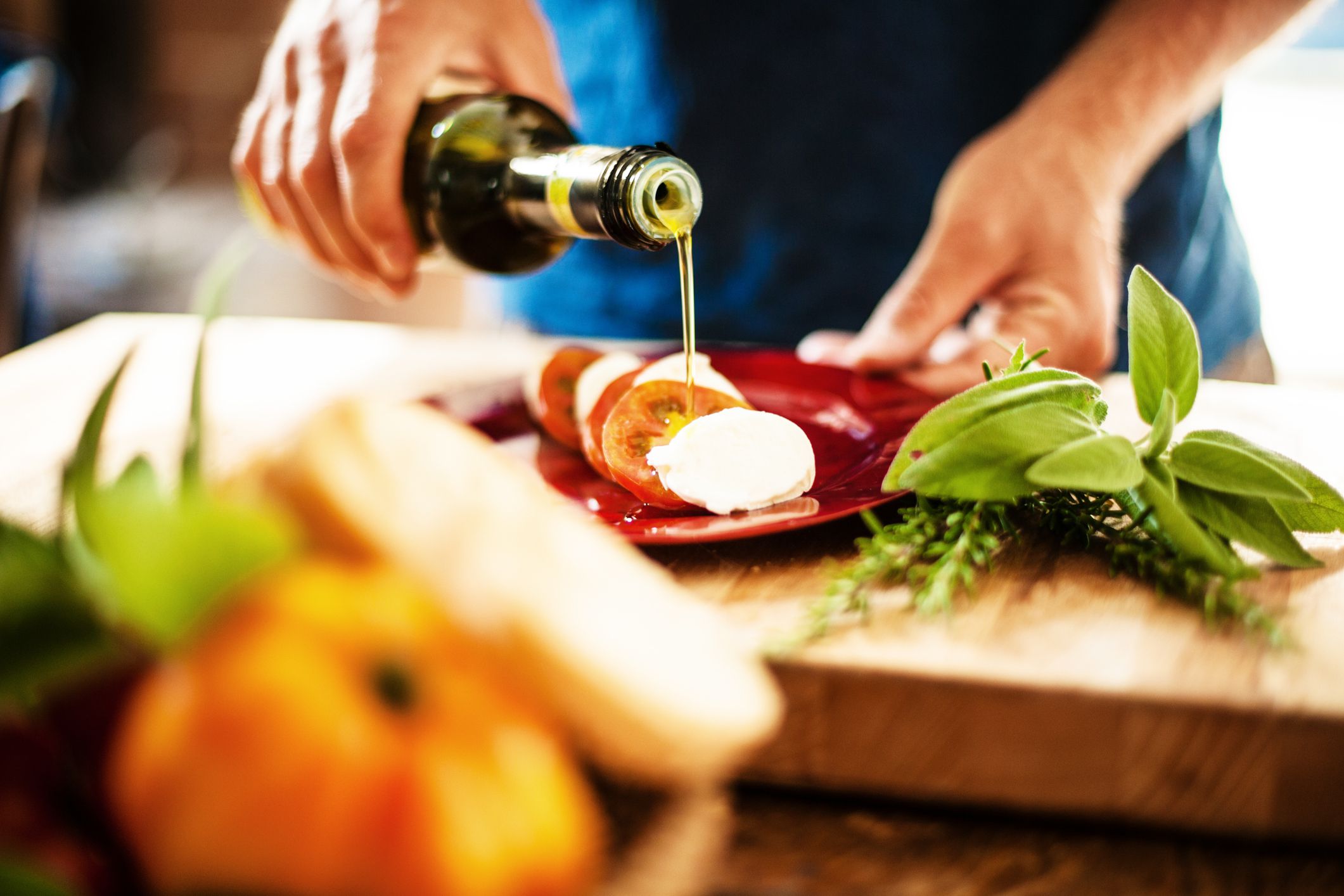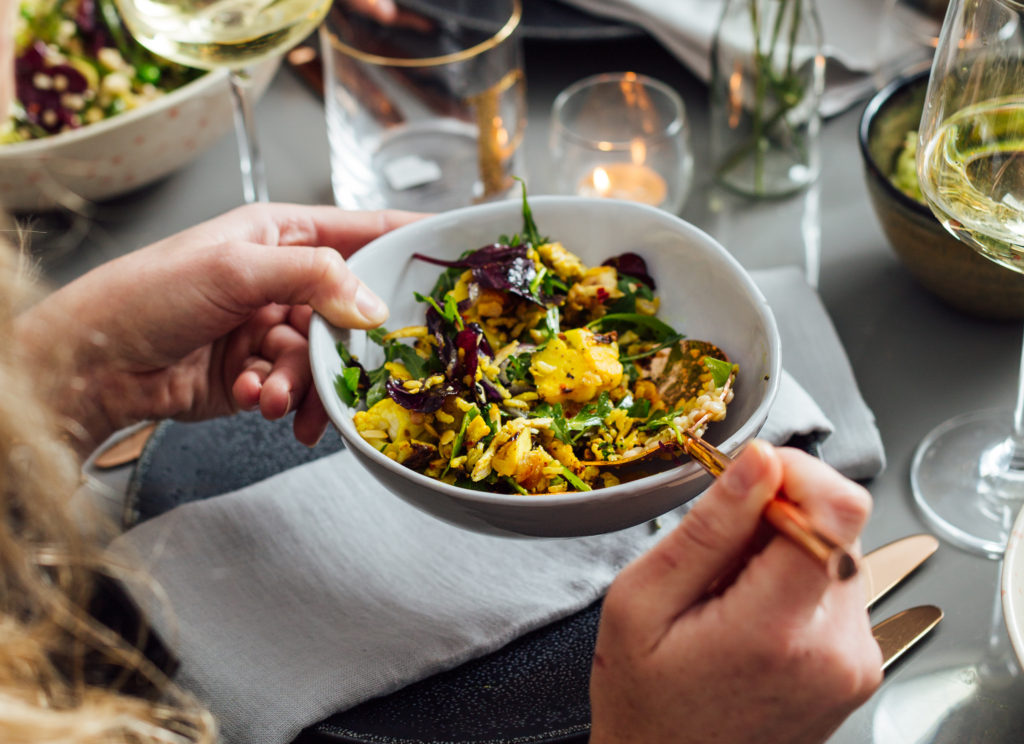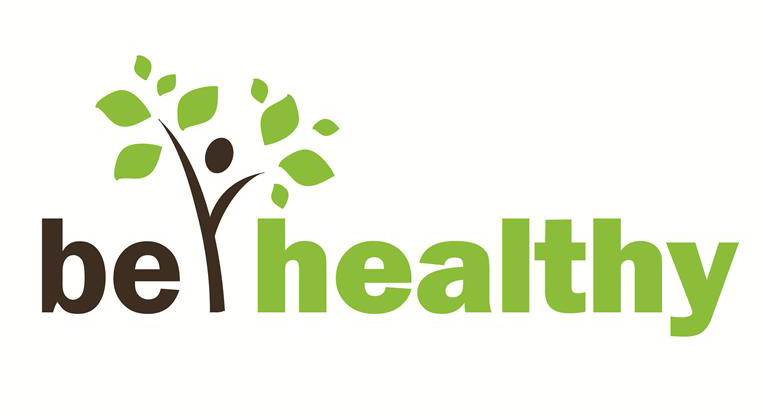Gluten is a protein found in wheat, rye, barley, triticale and oats. In people with coeliac disease, eating or drinking anything containing gluten causes different symptoms and damage to the lining of the small bowel. Gluten is commonly blamed for gut symptoms experienced by people with Irritable Bowel Syndrome (IBS). However, recent research suggests that the carbohydrate component in wheat, rye and barley is more likely to be the culprit (part of a group of foods known as FODMAPs).
A gluten-free diet allows bowel healing and symptom improvement in people with coeliac disease.
Gluten-free foods
Despite the restrictions, a person on a gluten-free diet can still enjoy a wide and varied diet. It is important to read the labels of all packaged or prepared foods.
Some gluten-free foods that people with coeliac disease can enjoy include:
- meat products – unprocessed meat, fish, chicken, bacon, ham off the bone and meats that are frozen or canned, but with no sauce
- dairy products – eggs, full-cream milk, low-fat milk, evaporated milk, condensed milk, fresh cream, processed or block cheese, and some custards and soy milks
- fruits and vegetables – fresh, canned or frozen (but not sauced), fruit juices, nuts and peanut butter
- cereal and baking products – corn (maize) flour, soya flour, lentil flour, rice (all types), rice flour, rice bran, potato flour, buckwheat, millet, amaranth, breakfast cereals made from corn and rice (without malt extract from barley), polenta and psyllium
- bread, cakes and biscuits – most rice crackers, corn cakes, rice crispbreads, corn tortillas and corn taco shells, packaged breads labelled gluten free, packaged biscuits and cakes labelled gluten free
- pasta and noodles – gluten free pasta, rice noodles, rice or bean vermicelli and 100 per cent buckwheat noodles
- condiments – tahini, jam, honey, maple syrup, cocoa, all kinds of vinegars (except malt), some sauces and some salad dressings, some tomato pastes
- snacks – plain chips, plain corn chips, unflavoured popcorn and plain chocolate
- drinks – tea, coffee, mineral water, wine, spirits and liqueurs.
Gluten-free cereal products
Naturally gluten-free cereal products that can be enjoyed include:
- amaranth
- arrowroot
- buckwheat
- chestnut flour
- coconut flour
- cornflour (from maize)
- cornmeal
- corn tortillas
- lentil flour
- millet meal
- pappadums (most types)
- polenta
- potato flour
- psyllium
- quinoa
- rice (any kind)
- rice bran
- rice flour
- rice vermicelli
- sago
- sorghum
- soy flour
- tapioca.
Specially made gluten free products
You can buy commercially prepared gluten-free products, including:
- beer
- biscuits
- bread
- breadcrumbs
- breakfast cereals
- baking mixes
- cakes
- muesli bars and other snack bars
- pastries
- pastas.
Always check the labels of foods and drinks carefully, as gluten can sometimes be contained in products you might think are safe.
Foods that contain gluten
Some foods that can contain gluten include:
- cereal and baking products – wheat, wheaten cornflour, semolina, couscous, wheat bran, barley, oats, porridge, breakfast cereals containing wheat, rye, oats or barley, corn or rice cereals containing malt extract from barley, some icing sugar mixtures and some baking powders
- pasta and noodles – spaghetti, pasta, lasagne, gnocchi, hokkien noodles, soba noodles and two-minute noodles
- bread, cakes and biscuits – all bread, pizza, cakes, pastry and biscuits prepared with flours from a gluten source
- meat products – any products prepared with breadcrumbs or batter, sausages and other processed meats or smallgoods (unless labelled gluten free), thickened soups, meat pies and frozen meals
- dairy products – malted milk, ice cream cones, some ice creams and some soy milks
- fruits and vegetables – textured vegetable protein (found in some vegetarian products) and fruit-pie filling
- condiments – malt vinegar, some mustards, relishes, pickles, salad dressings, stock, sauces, gravy and yeast extract from barley (for example, in Vegemite)
- snacks – liquorice, some lollies and chocolates, packet savoury snacks and some flavoured potato chips and corn chips
- drinks – coffee substitutes made from cereal, and some milk-drink powders
- alcoholic drinks – beer, stout (such as Guinness), ale, and lager (most beers contain gluten, but a range of gluten free boutique beers are now available in Australia).
Food labelling and gluten
All packaged foods have ingredient labels printed on the box, package or bottle. There are three methods of finding suitable gluten-free foods by reading the labelling. These include looking for:
- foods carrying the Coeliac Australia Endorsement logo
- foods labelled ‘gluten free’
- foods made for the general market that are gluten free by ingredient.
The product ingredient label may not list ‘gluten’ as a component. However, under mandatory labelling standards, all ingredients and food additives derived from wheat, rye, barley, triticale or oats must be declared on food labels. Processing aids must also be declared if they are present in the final product.
There is an Australian Food Standard for processed foods labelled ‘gluten-free’. When foods are tested using the prescribed test, there must be ‘no detectable gluten’. Currently, this test is sensitive to 0.0003 per cent (three parts per million).
Suggestions about gluten-free cooking
Contact your state coeliac organisation or talk to a dietitian about recommended gluten free recipe books. As a general rule, use locally published new releases, as overseas publications and older books may contain incorrect or outdated dietary information.
In some cases, you can change existing recipes for cakes and biscuits to make them gluten free. Because gluten is the ingredient in wheat that helps the cooked product to hold together, you will need to use some other types of binding agents.
Suggestions include:
- Replace the role of gluten with xanthan gum or guar gum powders. (You will generally need approximately half a teaspoon for a family-sized cake and one tablespoon for bread). These products are available from some state Coeliac organisations, health-food stores and some supermarkets. Using gelatine and psyllium husk can also help.
- Add an extra egg to pancake batters.
- Be prepared to experiment and accept that a few of your first attempts may be unsuccessful.
Make your own gluten-free flour
There are many recipes available for gluten-free flour substitutes, or you can buy ready-made gluten-free flour mixes, pastry and baking powder.
One recipe for gluten-free plain flour involves mixing together:
- 6 cups rice flour
- 2 cups potato starch
- 1 cup gluten-free cornflour.
To make gluten-free self-raising flour, add gluten-free baking powder to the above mix, and gums as described above. Baking powder can be made from:
- 1/4 cup bicarbonate soda
- 1/2 cup cream of tartar.
Sweet pastry can be made with:
- 60g maize cornflour
- 3/4 cup milk powder
- 1 1/2 cups coconut
- 120g melted butter.
Gluten-free diet and gluten contamination
To maintain a gluten-free diet, it is important for people with coeliac disease to avoid contaminating their own food with gluten. Tips include:
- Use a separate toaster when toasting gluten-free bread, or protect your gluten free-bread in toaster bags.
- Thoroughly clean all kitchen utensils, chopping boards and appliances that have been used for gluten-containing foods, or keep separate gluten-free utensils.
- Avoid sharing condiments such as butter or other spreads that may contain gluten crumbs.
- Use a clean pot with clean water to cook gluten-free pasta, and strain it with a clean strainer.
- Use clean oil when deep frying, and avoid eating foods that have been cooked in oil that has been used to cook gluten-containing foods.
- Wash your hands after handling gluten-containing food.
Where to get help
- Your doctor
- Gastroenterologist
Things to remember
- Gluten is a protein found in wheat, rye, barley, triticale and oats.
- A lifelong gluten-free diet is the only treatment for coeliac disease.
- A person on a gluten-free diet can still enjoy a wide and varied diet, but it is important to read the labels of all packaged or prepared foods.




